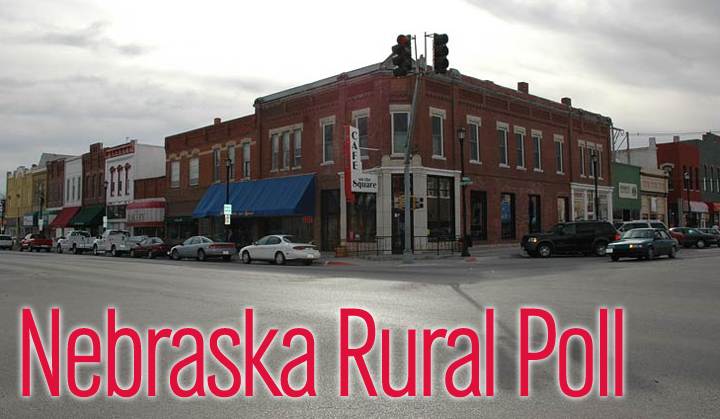
A higher percentage of rural Nebraskans this year said they've seen positive change in their communities than in any year since 1997, according to the 2012 Nebraska Rural Poll.
The 17th annual UNL poll was sent to 6,350 households in Nebraska's 84 nonmetropolitan counties in March and April. Results are based on 2,323 responses.
Thirty-four percent of respondents said their community had changed for the better in the last year, 20 percent said for the worse and 46 percent said there had been no change. The changed-for-the-better percentage is highest since 1997's 37 percent. As recently as 2009, only 23 percent said their community had changed for the better.
Members of the Rural Poll team said that optimism might be a reflection of a strong agricultural economy that largely has bucked nationwide economic trends.
"We're on a confidence uptick," said rural sociologist Randy Cantrell. "Now, what the drought does to that is a question" that likely will be reflected in next year's poll.
The poll also explored residents' involvement in their communities. It found: 79 percent have belonged to a local group or organization; 77 percent have donated money to a local organization, charity or cause other than a church; 74 percent have donated to a local church; and 71 percent volunteered time to a local organization.
Also, 35 percent said they had held a leadership role in a local group in the past year and 11 percent have held a public office or served on a government board in the last year.
Those percentages are generally down from 2002, the last year these questions were asked. The poll shows that those with incomes above $60,000 and those in agriculture or management/professional and education are likelier than other income and employment groups to get involved in and lead organizations.
Rural sociologists like Cantrell worry about declining interest in serving in and leading community organizations, a trend confirmed in comparing the 2002 and 2012 numbers. Some residents may be content to let "a small and relatively elite group" step forward and lead, he said.
Cheryl Burkhart-Kriesel, UNL Extension specialist in entrepreneurship/business development in the Panhandle, said she was surprised the differences in involvement weren't more pronounced among age groups. But, she noted, there are significant, though understandable, differences in donating to local groups between income categories. Eighty-seven percent of those making $60,000 or more reported donating to local groups or causes, compared to 58 percent of those making less than $20,000.
In another area, most rural Nebraskans said they have access to various goods and services within 15 miles, including: post office, 94 percent; gas station, 89 percent; bank, 82 percent; church, 81 percent; grocery store, 78 percent; auto repair, 78 percent; and restaurant/café/bar, 77 percent.
However, only 43 percent said they had critical medical care within 15 miles.
As in past years, the poll shows rural Nebraskans rate their communities high on a variety of social dimensions, including friendliness, trust and supportiveness, and on most basic community services and amenities, including fire protection, parks and recreation, education and more. But they rank their communities lower on other qualities, such as retail shopping, entertainment, streets and roads and restaurants.
"There clearly are tradeoffs people are willing to make" to live in rural areas, Cantrell said.
The Rural Poll is the largest annual poll of rural Nebraskans' perceptions on quality of life and policy issues. This year's response rate was about 37 percent. The margin of error is plus or minus 2 percent. Complete results are available online at http://ruralpoll.unl.edu/home.
With its 17-year history, the poll has a collection of data about rural trends and perceptions that is unmatched in the country, said Becky Vogt, project manager who's been working on the Rural Poll since its second year.
The university's Center for Applied Rural Innovation conducts the poll in cooperation with the Nebraska Rural Initiative with funding from UNL Extension and the Agricultural Research Division in the Institute of Agriculture and Natural Resources.
More details at: http://go.unl.edu/p4c